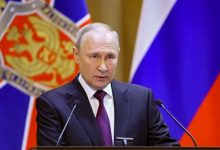Princess Diana’s Bodyguard Who Survived The Crash Of 1997, Opens up On The Accident That Consumed The People’s Princess And Others
By Ebor Cletus Ralph Jr.
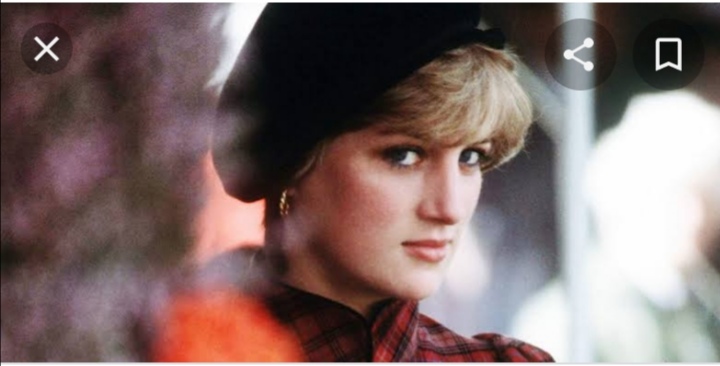
One tragic moment defined the 1990s: the death of Princess Diana. While her passing and funeral were endlessly discussed, a new perspective on that fateful evening took some time coming to light. In fact, one person who was in the car that evening finally shared his side of the story.
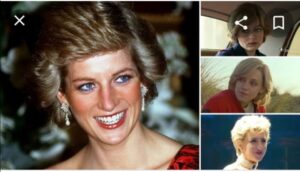 I
I
On August 31, 1997, a black Mercedes sped towards Paris’ Pont de l’Alma tunnel. Princess Diana and her partner, Dodi Fayed, were sitting in the back seat, waiting to arrive at the Hotel Ritz.
With the paparazzi close behind, driver Henri Paul stepped on the gas. He infamously lost control of the vehicle, slamming directly into a concrete support pillar near the tunnel’s entrance.
Diana, Fayed, and Paul all tragically died that morning; the world immediately began to mourn the fallen princess. But there was one other passenger in the car on that fateful night.
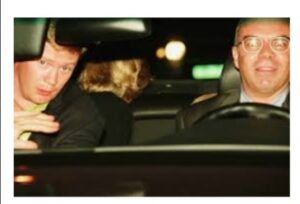
Trevor Rees-Jones, a body guard tasked with protecting the couple, was sitting in the front passenger seat. Against all odds, he survived the crash that killed everyone else in the vehicle.
First responders immediately saw the severity of the accident, as the front portion of the car was completely folded onto itself like an accordion. How did Rees-Jones make it out alive?
Rees-Jones, like everyone else in the vehicle, wasn’t wearing his seat belt. Riding in the front passenger seat, however, did give him one crucial advantage during the moment of impact.
During the crash, the car’s airbags deployed and protected the bodyguard from the brunt of the impact. Just because he was alive, however, didn’t mean that he was in good shape.
Rees-Jones’ body slammed into the dashboard of the car with incredible force. Despite the airbag’s protection, his very human bones weren’t designed to withstand such a strong impact. Paramedics were shocked by what they found.
When Rees-Jones was removed from the car, his facial bones were crushed into dust. Surgeons would painstakingly use 150 pieces of titanium to reshape his face. But that wasn’t his only problem.
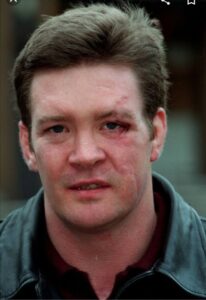
The body guard also suffered serious chest injuries and a broken wrist. He was in such bad shape that doctors placed him in a medically induced coma for 10 days.
Eventually, Rees-Jones made it out of the hospital. While his physical health was returning to normalcy, his life was still in disarray. Things would get much worse before they improved.
As the public tried to process the tragedy, they started pointing fingers. Since he was the sole survivor and the person who was paid to ensure Diana’s safety, Rees-Jones’ reputation was soon under fire.
Many said he should have stopped Paul (who had been drinking) from getting behind the wheel or speeding into the tunnel. Others said he should have insisted Diana and Fayed buckle their seat belts. Either way, they said, he could have saved the princess.
But the attacks became even more personal. Fayed’s father claimed that the body guard was only pretending that he couldn’t remember the events before the crash to avoid taking responsibility. It got to be too much for Rees-Jones.
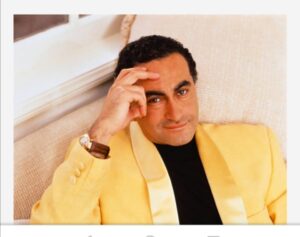
A year after the crash, Rees-Jones stopped working with the Fayed family. He returned to Shropshire, England, and took a job in a friend’s sportswear store. But he couldn’t completely escape his past.
Rees-Jones avoided interviews and tried to focus on the future, rather than what had already happened. But, eventually, his opinion changed. He decided that he had to speak out and tell his side of the story.
In 2000, he put his memories on paper, writing The Bodyguard’s Story: Diana, the Crash, and the Sole Survivor. In the book, he shared two recollections of the infamous night.
He claimed he remembered motorcycles and photographers pulling alongside the car during its fateful trip towards the tunnel. But he also recalled one shocking thing that happened after the crash.
Rees-Jones wrote that he heard Diana moaning “Dodi” after the accident. Psychologists warned him that it could be a false memory, but the body guard is confident in what he heard.
In 2008, an official inquest concluded that Henri Paul bore sole responsibility for the fatal crash. After a decade of painful rehab and scrutiny, Rees-Jones could finally move on with his life.
Rees-Jones reportedly still lives in Shropshire. He works as a security consultant and plays rugby in his spare time; after being forced into the global spotlight, he finally has the simple life he craved.
But, with someone as famous as Princess Diana, the story is never that simple. In fact, one aspect of her life is still affecting one of her sons to this very day.
Princess Diana of Wales made quite a splash as the first wife of Prince Charles, but her entry into the royal family was anything but easy. In fact, one of her first royal events cast a shadow over her most important relationship.
It was 1981 when Princess Diana prepared herself for her very first Trooping the Color ceremony. Nervous as she was to stroll through such enthusiastic fans, she knew people thought fondly of her.
One of the reasons people were drawn to her demeanor was because she was different from other royals. She seemed more laid back and less prone to the royal family’s rigid way of life. She would be an interesting contrast to the event.
As was tradition, this Trooping ceremony would take place at Buckingham Palace, which is the kind of place you can’t help but stop and stare at when you pass by. All eyes would be on the princess.
Few events are as intricately organized and historically important as Trooping the Color. The tradition started way back with King George II, who merged his birthday celebration with a massive military procession during the summer season.
People flock from all over the world for a chance to see this epic scene unfold up and down the streets near Buckingham Palace. And, as you can imagine, at the forefront of the entire procession is the Queen.
Back in her heyday, the Queen came out on horseback after a thorough inspection of all of the 1,000 soldiers ready to march. But, it’s not just soldiers on foot that join in the event.
The Royal Air Force even flies overhead and performs a dazzling display of aircraft finesse, and a 41-gun salute indicates the celebration is over. It’s truly a spectacle, but few processions were as talked about as Princess Diana’s first trooping ceremony.
At the time of the Diana’s first time attending, she was coupled with Prince Charles. Because the prince held a role as a senior officer in the military’s Household Division, he marched separately from Diana. For some, this raised eyebrows.
And at first, it might seem strange for Diana and Charles not to travel together during the parade, but because of his status it was required. However, there was something else that threw people for a loop.
At the time of the ceremony, Diana and Charles were only engaged. This went against tradition, seeing as up until that point, the event had a strict “no ring, no bring” policy. Still, there was more going on that careful observers noticed.
The relationship, now fully in the public eye, was downright odd. At the time, they couldn’t get over another big point of controversy: Charles and Diana hit it off at a shooting party when she was only 16 years old. But that wasn’t all.
To boot, he was actually romantically involved with Diana’s sister at the time! Not a good look, Charles! He said of Diana at the time, “I remember thinking what a very jolly and amusing and attractive 16-year-old she was.” Yikes.
There was also the very prevalent question of whether or not the Prince’s heart even belonged to Diana. Speculation swirled that he was still in love with a woman named Camilla Shand he briefly dated before Diana.
During a post-engagement interview, a reporter asked Charles if he was in love with his new beau. His response was weak to say the least. “Whatever ‘in love’ means,” he oddly replied.
The odd relationship Diana had with Charles certainly had people talking. But, even before Diana’s first Trooping the Color she was already making waves, and not the kind that impressed the Queen.
The very first time the couple appeared after they announced their engagement was at a concert at London’s Goldsmith Hall, and Diana’s attire turned heads. She wore a dress that, according to her, was “two sizes too small.”
Luckily, Princess Grace of Monaco — a former Hollywood actress — swooped in to the rescue and explained to Diana the royal protocol when it came to garb. Later in life, however, Diana was known for her savvy fashion sense.
Needless to say, there were several reasons Princess Diana’s 1981 appearance at Trooping the Color was shrouded in controversy. Luckily, she powered through and eventually became one of the most beloved members of the family worldwide.
Because of her charm and willingness to step away from royal protocol, the world was shattered when Diana died in a car wreck in 1997. But, even after her death, controversy again followed her.
Princess Diana of Wales was the first wife of Prince Charles, but she was far from just a pretty face who showed up at royal family events. She contributed to many good causes all over the world.
She was heavily involved in helping sufferers of AIDS and HIV, traveling to countries ravaged by the disease doing whatever she could to ease the pain. But, the fight against AIDS wasn’t the only cause she took up.
Knowing how much of the world faced extreme poverty, she visited African countries to help feed children and their families. It was her work in the country of Angola, however, that was especially important — although seriously dangerous!
The nation of Angola saw a brutal civil war that lasted from 1975 until 2002. Over a million people died as a result of the fighting, but years afterward, the death toll continued to rise because of one particularly deadly weapon.
Those weapons were landmines. Nowadays, the military knows just how devastating these explosives are, and their use is highly frowned upon because of the civilian casualties they cause. So, Princess Diana did something about it.
Not only did she become a huge proponent of removing active landmines from war-torn nations, but it actually became one of her biggest legacies. Working with a group called Halo Trust, she ventured into active minefields for a first-hand look.
Her goal was to gain a thorough understanding of how landmines are located and then safely cleared away. And, as you can imagine, it’s a job few people are willing to put their lives on the line for.
Using metal detectors, workers carefully make their way throughout fields detecting the mines. They wear padded clothing and protective masks, but in reality, if one blew up in their face, the outcome wouldn’t be pretty.
This is one of the most iconic photos ever taken of the princess. She’s sitting next to a young girl who lost her leg in a landmine incident. It was accidents like this that stirred up so much motivation in her to push for drastic changes.
Diana’s involvement was so influential that many credit her with playing a major role in the passing of the Ottawa Mine Treaty, which 122 countries signed to ban the use of antipersonnel mines.
As you can see, Princess Diana loved chatting with locals and truly understanding what they were going through, and they showed the utmost appreciation for her willingness to listen. However, not everyone saw her actions in the same positive light.
At one point during her crusade to eliminate landmines, Earle Howe, the United Kingdom’s junior defense minister at the time, claimed he believed her motives were politically charged. Unfortunately, only months after Diana led the landmine charge, it came to an abrupt stop.
On August 31, 1997, the world mourned when breaking news alerted everyone the Princess of Wales was involved in a fatal car accident. However, there was one person who wouldn’t let the work she was involved with come to an end.
Prince Harry, Diana’s youngest son, knew the effort his mother put into her various charities shouldn’t go meaningless. So, he took the reins and got involved in the causes his mother held dear.
Prince Harry eventually became one of the world’s leading advocates in the fight against AIDS and HIV. He spoke at conferences to continue Diana’s efforts, and he even did it with the help of Sir Elton John. But, he also continued his mother’s legacy in another way.
He became a patron of Halo Trust, the same group as Diana, for the push to eliminate active landmines in Angola. With all the work Halo Trust did, Angola was soon one of the countries leading the way in landmine removal.



